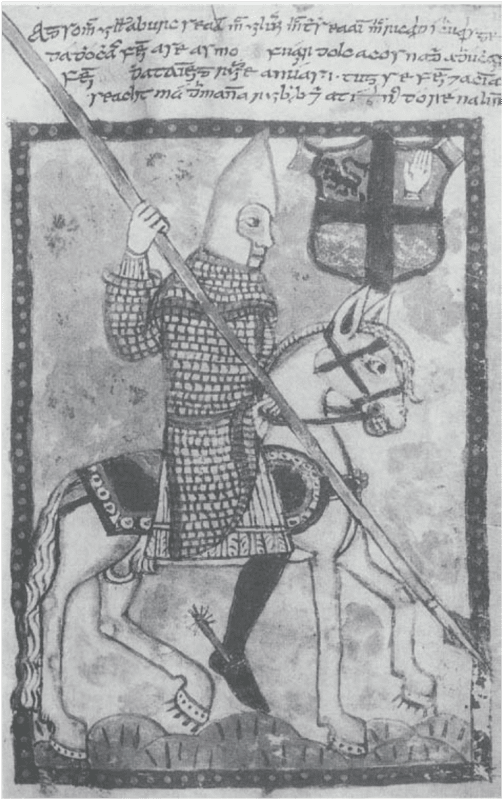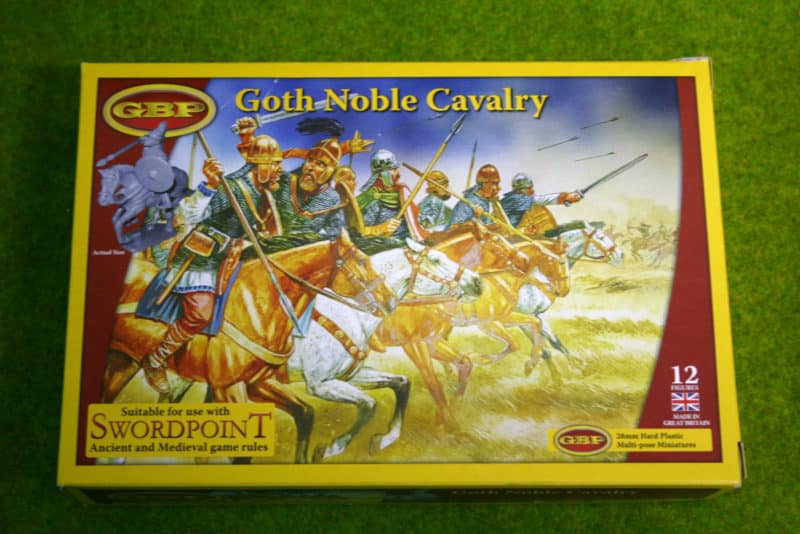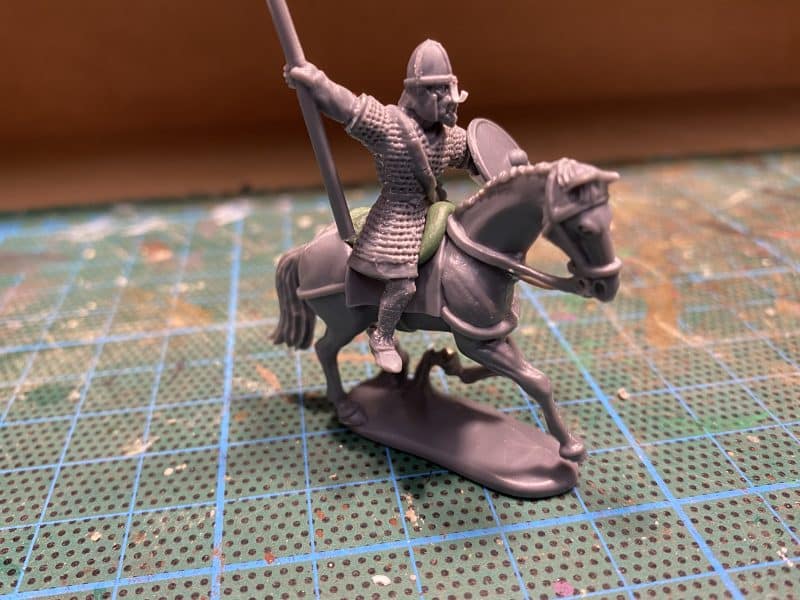Having painted an Irish War of the Roses Infantry force, I decided that I needed to add some cavalry to complete the army. I had originally intended to use my existing English Light Cavalry but after some thought, I decided that I wanted a ‘pure’ Irish army. My first port of call was google, in order to research the nature of Irish Medieval Cavalry. This image caught my eye. Captioned as a ‘IrishHobelar’, I thought that a unit of these would look great!

As it turned out, research seemed to indicate that this style of Hobelar had disappeared by the time of the War of the Roses and it was based on the ‘Anglicized’ version of the Irish light horse. I would have to think again. My research did lead me to read the Osprey Men at Arms book #256, ‘The Irish Wars of 1485 – 1603’ as well as finding a rather good blog (Camisodo), both of which explained how Irish Cavalry had developed ( or not!) by the time of the WOTR and into the Renaissance period. The link to Camisado ‘s blog is here:
http://camisado1500s.blogspot.com/2018/02/irish-chieftan-and-noble-cavalry.html
It’s a very good read and the author has done a great deal of work digging up references. I thoroughly recommend that you read it!

In brief, it would seem that Irish cavalry were in the main, small groups of the Irish nobility and their sons, mounted on light ponies or Hobbies (the Connemara Pony being the modern version). The Irish tended to wear mail shirts rather than plate armour and used their lances or spears in an overhand style rather than in the couched position that the English preferred. This differing style may be because the Irish did not use harness and saddlery but were sat on cushions. The result was that they were easily knocked off of the horse in a collision with a heavier rider firmly sat on a saddle. That said, they were usually nimble enough to avoid the collision in the first place and if knocked off, quick to remount the smaller ponies that they were using. There is also a hint that the spears used were more like a javelin or dart as there is at least one account of a lord retrieving his ‘spear’ from a wounded enemy using a wrist strap.

In the picture above, the English, or Irish/English cavalry are shown on the left, pursuing the Irish cavalry on the right. A few other details can be made out from this image. The Irish had strange, upturned nose guards on their helmets, the cushions that they sat on were quite decorative, the helmets were generally conical and they were carrying shields or ‘Targes’. The shields are shown as being worn on the back (riders on the far left) and held ( downed rider in the foreground). I felt that I had enough information to go about making a unit or two of Irish Light cavalry and enough information to justify making them look a bit different to standard English WOTR light cavalry.
One final recurring item of interest was that the Irish seemed to be very much influenced by their Scottish connections rather than the English. Of course, the Gallowglass warriors were originally from Scotland and there are the ‘Redshanks’, Scottish mercenaries from the Highlands and Western Isles that were contracted to fight in Ireland. Although in widespread use in the 16th Century, they were first hired in 1428 for the siege of Carrickfergus castle. This Scottish connection would give me an excuse to use a bit of licence when it comes to painting my troops.
Despite this research, I feel the need to issue a disclaimer. I am building a wargaming army, not a museum exhibit. Nor am I trying to write a treatise on the history of Irish Cavalry, so please excuse any inaccuracies. I am well aware of the liberties that I may be taking! For a start the limited picture information that we have is dated well beyond the period that my troops are operating in and the pictures are of course, artists impressions, not photographs, so they may be as inaccurate as the models that I am making.
In summary, what I have learnt from my limited research is that:
- Irish Cavalry were in the main made up of the minor nobility and their personal retainers.
- The riders did not use stirrups
- They sat on cushions/pillows that appeared to be decorated.
- They used their lances or spears overarm rather than in the ‘couched’ position.
- They carried Shields or Targes of varying sizes. The targes appeared to be made from leather skins (deer skin or ox hide) over wooden frames.
- The targes were painted and decorated with metal pins or nails to form a pattern.
- The helmets were generally conical with up-turned nose guards. Some had plumes.
- The riders wore legging and shoes although some may have been bare legged.
- A cloak or ‘brat’ was worn by some of the riders – particularly the lords.
- The were attended by ‘horse boys’ who had spare mounts and additional/replacement spears.

So how do I replicate these details on my cavalry? I wont go through my entire decision process, but I wanted plastic figures rather than metal and I thought that the Gripping beast Goth Noble cavalry were very close to the look that I was looking for. All that was missing was the cushion that the riders sat on. I was happy to ignore that some of the strapping/harness on the horses was slightly incorrect and I would sand down the leggings on the riders to remove the leg bindings. The only other issue for me was that the heads looked a bit too ‘Gothy’ which is great if you are building goths….Strangely, the solution was to use the heads from the Wargames Atlantic Goths.

They had helmets without plumes and the features were not so pronounced. And of course, I had the option of using the Perry war of the Roses heads, of which I had plenty spare!
Now that I had my base figures, it was just a question of putting everything together. I will cover assembly and painting in my next blog but here’s a picture of my first attempt!

I my next blog, I’ll detail how I went about modelling and painting my Irish Cavalry. In the meantime, here’s a picture of the first three finished figures.

THE COMMERCIAL BIT
I hope that you all enjoy your hobby as much as I do – our web site will have much of what you need! Click here to see our shop.
Happy Modelling!
